Date of publishing: 28th
March 2012
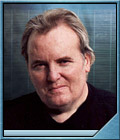 Martin Bower is one of the most highly prolific model
makers and designers to the film, TV, advertising
and publishing industry. Martin started off building
models as a child inspired by his TV favorites. He
is totally self-taught with no college or formal training.
Martin Bower is one of the most highly prolific model
makers and designers to the film, TV, advertising
and publishing industry. Martin started off building
models as a child inspired by his TV favorites. He
is totally self-taught with no college or formal training.
His first TV commission was building sign boards
for a PG Tips chimps advert! However, he eventually
got a job building and designing models for the TV
series Space 1999, thanks in part to the help of SFX
Director Brian Johnson, to whom Martin freely admits
to being indepted for giving him a very free hand,
both in the designing and building of the 86 models
he did for the show over a 3 year period. Martin also
built models for a one-off TV show produced by the
same team that did Space 1999. Into Infinity (aka
The Day After Tomorrow) featured Space 1999 stars
Nick Tate and Brian Blessed and gave Martin the opportunity
to design and build all the models for the film. The
Altares 'Lightship' featured in the film is still
one of Martin's favourite designs.
Martin went on to work on the TV series Blakes 7,
(being responsible for the design of the now famous
Teleport Bracelets) Dr Who, The Tomorrow People, Tomorrows
World, Horizon, Tripods and many more. He was also
Supervising Modelmaker on the 1979 feature film Alien,
contributing designs to the film as well as models.
He also held the same post on Flash Gordon and Outland,
starring Sean Connery.
www.martinbowersmodelworld.com
This interview has been conducted by Eric Chu (Designer
on Battlestar Galactica) for The Scifi World.
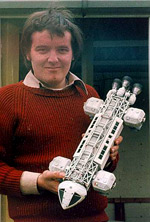 Eric
Chu: Model building
is widely thought of as a hobby, not something that
is normally thought of as a typical professional vocation,
and those who have found themselves in this field
are a select few indeed. Is that distinction simply
a matter of payment, or is there something more to
it? What sets a professional model builder apart from
a hobbyist? Eric
Chu: Model building
is widely thought of as a hobby, not something that
is normally thought of as a typical professional vocation,
and those who have found themselves in this field
are a select few indeed. Is that distinction simply
a matter of payment, or is there something more to
it? What sets a professional model builder apart from
a hobbyist?
Martin Bower: Well, for me it was
watching “SUPERCAR” and films like “THE
FIRST MEN ON THE MOON” (Ray Harryhausen, who
did the animation for that film and of course the
Sinbad films, who I've very luckily got to know well
over the past 26 years, was a real hero of mine) So
at the age of around 8-10 years old. I found these
films & TV programmes so inspiring, I just knew
from then onwards, there was only one job for me &
that was to be a Special Effects Modelmaker. Yet,
my school teachers all did everything they could to
put me off, but I was never swayed! And to date I’ve
built 1046 models since going professional 41 years
ago; I’d like to meet one of my teachers but
they’d be long dead now! But also you ask what
sets the professional apart? I think really it’s
the ability to work without doing any proper drawing,
and to work really fast! (which was certainly the
case on my first major production “SPACE 1999”).
In the episode “DRAGON’S DOMAIN I had
to build 3 scales of the ULTRAPROBE, including a large
model that had moving arms for the shot of the Command
Module detaching from the Space Station where the
“Dragon” resided, and 4 derelict ships,
all in 4 weeks!
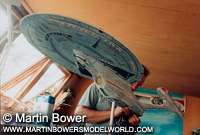 Eric
Chu: Do you make
a distinction between those who are kit builders and
scratch-builders? What are the challenges a scratch
builder faces that a kit builder does not? Eric
Chu: Do you make
a distinction between those who are kit builders and
scratch-builders? What are the challenges a scratch
builder faces that a kit builder does not?
Martin Bower: Well mainly the ability
to use many other materials. For example being able
to carve wooden shapes accurately is a must. Almost
all the THUNDERBIRD models and other craft like the
“ENTERPRISE “E” from “Star
Trek”, “The NAUTILUS” from “20,000
LEAGUES UNDER THE SEA” and any other shape involving
compound curved shapes (that’s when a curve
is going in 2 directions at once) were carved in the
rubber tree wood Jelutong, with moulds being taken
off these masters to produce fibreglass castings that
were light but strong.
Eric Chu: Do
you consider modellers artists or craftsmen? Where
is the line that separates the two?
Martin Bower: Well it depends on
what you mean by modellers. To me model makers are
artists in my line of work. But if you build model
buildings for say, office developments, then that
is not art, it’s craft. But SFX modelling involves
being an artist as well as a model maker.
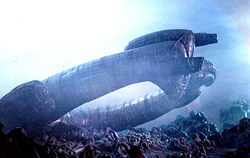 Eric
Chu: What are the
biggest misconceptions that Hollywood, or people in
general, have about miniature building? Eric
Chu: What are the
biggest misconceptions that Hollywood, or people in
general, have about miniature building?
Martin Bower: I don’t know
that they have any misconceptions. They know models
are expensive, but nothing like as expensive as doing
it CGI!
Eric Chu: What
are the specific challenges one has to consider when
creating a model for film work as opposed to a display
piece?
Martin Bower: Well film & TV
models need to strong! They get knocked about quite
a bit & when we have jet charges put into models
to create, say, Thunderbird 2 landing, the model has
to have flame-proofing around that area. Otherwise
really there is no difference. I mean many models
I’ve made for TV or film have ended up as display
models in either exhibitions or museums.
Eric Chu: What
is the biggest limitation of using miniatures? And
what do miniatures do better than any other technique?
Martin Bower: I don’t know
that there are any limitations, I mean all models
can be filmed in almost any way. See the first original
“STAR WARS” as an example. That was all
done with actual models originally. Also models look
as if they are actually there, if you see what I mean.
Some CGI effects look more kind of cartoon-ish, if
indeed there is such a word. Certainly I’ve
never seen CGI produce smoke or dust being blown up
say on a spacecraft landing on a planet. It always
looks odd in CGI.
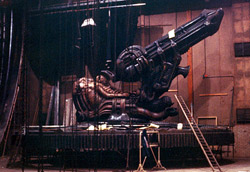 Eric
Chu: What technological
advances do we have now that have dramatically change
the face of miniature work since the early days? Would
you have made any of your models differently now? Eric
Chu: What technological
advances do we have now that have dramatically change
the face of miniature work since the early days? Would
you have made any of your models differently now?
Martin Bower: No, but without a doubt
Computer Generated Imagery (CGI) has put a great many
model makers out of business. Indeed the latest in
the line of ALIEN films (Prometheus) is not using
models on it at all, & I think that’s a
real shame. As far as I’m concerned I’ve
still never seen a CGI shot that looked so realistic
you could not tell it from a three dimensional model.
Somehow CGI always looks “fake”. I mean
take “STAR TREK: VOYAGER” for example.
In the scenes where its legs deploy and it lands on
a planet it almost looks like a PIXAR animation, especially
the smoke & dust, they really can’t get
that right!
Eric Chu: Going
back in time, was building models always more than
a hobby? What had you planned on doing after school?
Martin Bower: I knew, as I’ve
already said , that I wanted to be a Special Effects
model maker from about the age of 8. I was a total
failure at school & thoroughly hated it! Nobody
really encouraged me, except my mum & her father
(my grandpa) They were always very supportive. But
sadly my dad was a city financier & never really
knew where I was coming from. I remember the first
day my models came on TV, he was too busy to even
come & see them & I was always sad about that.
He died 3 years ago & I think at the end he had
finally realised that what I did was “a proper
job”!
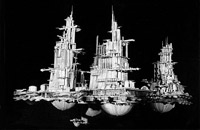 Eric
Chu: Do you prefer
working solo? or as a team on bigger projects? Eric
Chu: Do you prefer
working solo? or as a team on bigger projects?
Martin Bower: I tend to prefer working
alone. I work faster that way as there are no distractions.
Sometimes of course you need help on certain large
jobs, and also if you’re working on a film in
the studios, as opposed to building the models outside
& then delivering them, you work as a team. The
only bad experience of that is that some people in
the film industry take against you if you’re
younger than they are & are Supervising Model
Maker. Also certain people don’t like you just
because you make models better than they do.
Eric Chu: Do
you prefer working from very specific plans, or a
rough sketch?
Martin Bower: Rough sketches every
time, or sometimes no plans at all. I have a very
vivid mental picture in my mind of what I want to
see & am able to work towards it without the use
of any plans. This was certainly the case with “Space
1999” as I think I’ve said, there was
barely time to think on that show, let alone do drawings!
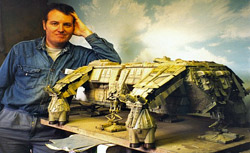 Eric
Chu: How are the
old models holding up these days? I've heard horror
stories about old miniatures languishing in studio
storerooms rotting away. Do you now take endurance
into consideration when you take on a contract? Have
you been able to rescue any from the scrapheap? Eric
Chu: How are the
old models holding up these days? I've heard horror
stories about old miniatures languishing in studio
storerooms rotting away. Do you now take endurance
into consideration when you take on a contract? Have
you been able to rescue any from the scrapheap?
Martin Bower: Studios & certain
people (who I’ll leave you to guess at) throw
the models away and/or have them burnt! I think this
is a CRIME! One very well-known producer had all the
models, sets & puppets burnt when the studios
closed down! A few people grabbed what they could,
but most were lost for ever. TERRIBLE! I managed to
get the OUTLAND Shuttle & The original large “Liberator”
from “Blake’s 7” back & restore
them, but I sold them at auction in London a few years
ago with the money going to charity. The “Outland”
model weighed 60 lbs!
Eric Chu: You,
as well as model work in general, seem to have a tremendous
following in Japan, where miniatures are often favoured
and adored much more than in the Western world. Do
you find that it is a cultural difference, or is model
work pretty much loved universally?
Martin Bower: I must admit the fans
in Japan are great at having replicas made of their
favourite craft if that is anything to go by. Indeed,
I have seldom made models for collectors in the UK
as it seems there just isn’t the money here.
Also the Japanese & indeed the Americans &
Canadians seem to realise that these models do not
come cheap, as it’s the hours they take to build
the determines much of the price, but certainly I
have done more collectors jobs for people in Japan
than for any other country.
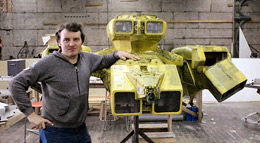 Eric
Chu: In terms of
personal projects, what’s the longest time you’ve
ever spent on a model? Eric
Chu: In terms of
personal projects, what’s the longest time you’ve
ever spent on a model?
Martin Bower: The models I built
for my own TV project “STARGUARD have kept me
busy on & off over the years, but the model that
took the longest time was the USS ENTERPRISE “E”
model. It was just over 5 feet long & took almost
4 months to build. It had 3 different lighting systems
in it which had to be run on 3 different voltages,
this of course is excluding models like the NOSTROMO
for “ALIEN” which was a team effort anyway,
but with it initially being painted yellow & filmed
like that, only to then be changed by Ridley Scott,
(the Director) when he came over to Bray studios where
we in the model unit were based & had the models
changed & then re-shot all the SFX miniatures
again, made the NOSTROMO & REFINERY probably the
longest models taken to build in terms of time actually
spent on a single model. We worked out at the time
that the NOSTROMO would have cost £88,000! A
huge amount today, never mind back in 1977.
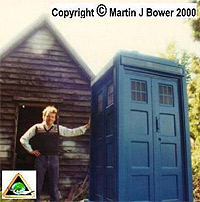 Eric
Chu: In terms of
professional work, what was the most enjoyable project
you’ve ever worked on and why? Eric
Chu: In terms of
professional work, what was the most enjoyable project
you’ve ever worked on and why?
Martin Bower: Well that has to be
“SPACE 1999”. Obviously I spent a lot
of time on my “STARGUARD” project, but
that was me making models for my own film. But “Space
1999” was great because never before (or since!)
have I had so much control over the way the models
were designed, I had almost total control over the
designs of all the ships I built, & I owe that
to Brian Johnson who saw I could do these models &
allowed me that freedom.
Eric Chu: In
terms of design work, what are some of your favorite
designs and/or designers? What really grabs you? What
do you look for in a successful design? What makes
for an unsuccessful design?
Martin Bower: Well that’s really
4 separate questions! If I could only take one to
my desert island it would have to be SUPERCAR, the
show that started me on the road to doing what I do.
As I’ve explained. Reg Hill’s design was,
& still is truly wonderful. I just cannot work
out why nobody, with the exception of the “BUDGIE”
model bought out in the 1960’s, has ever got
the shape, or colours of that craft right! I also
love Harper Goff’s “NAUTILUS” from
the Disney's “20,000 LEAGUES UNDER THE SEA”&
Ray Harryhausen’s design for “CAVOR'S
SPHERE” in “THE FIRST MEN ON THE MOON”.
As designers go, I think for the sheer number of good
designs, it would be difficult to beat Derek Meddings
& Mike Trim, who together designed all the craft
from the puppet shows from “Thunderbirds”
& the shows that followed.
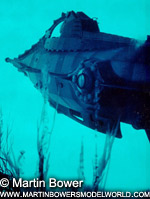 As
to what makes a successful design, well we all have
our favourites, but I tend to prefer (as is indicated
by me choosing SUPERCAR) craft that are sleek &
are not too cluttered. As
to what makes a successful design, well we all have
our favourites, but I tend to prefer (as is indicated
by me choosing SUPERCAR) craft that are sleek &
are not too cluttered.
A bad design is where someone gets a basic shape &
with no thought about what a certain thing does; just
sticks kit parts all over a model, the end result
is just a mess! It’s fine to use kit parts to
detail models, we all do it, but you must give thought
to what that piece of detail looks like & what
its function is. Also it’s important to leave
areas clear on heavily kit-bashed models as panel
lines & good weathering can make or break a model.
Eric Chu: What
is the skill set that a “modeller” should
work on developing? What’s the most important
technique that you ever learned from someone else?
Martin Bower: I think being able
to carve 3D shapes in wood is very useful. I wasn’t
taught anything, I just sort of picked it up along
the way. But I guess being able to use a Lathe is
VERY important!
Eric Chu: Recently
there has been news of SPACE: 2099 going forward by
ITV. However there is another such project that has
existed online for years and your attachment to Eric
Bernard's proposed production is an exciting prospect.
Would this mean a full return to using miniatures?
Or a combination of practical and digital effects
work? Have you been approached to participate in Jace
Hall's production?
Martin Bower: I’ve not heard
of Jace Hall & was not aware of another project
other than Eric Bernard’s “SPACE 2099”
I’m pretty certain we will be using miniatures,
but with certain effects added on in CGI. It’s
all a bit early yet.
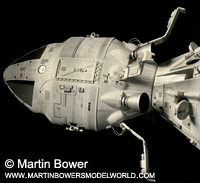 Eric
Chu: How do you
feel about ITV's plans to remake or re-imagine the
story? Do you feel there are ways to significantly
improve the original series, or is it better left
well enough alone? Eric
Chu: How do you
feel about ITV's plans to remake or re-imagine the
story? Do you feel there are ways to significantly
improve the original series, or is it better left
well enough alone?
Martin Bower: I think they have to
move the story on. I mean, the new series (if indeed
it goes to a series) is happening nearly one hundred
years in the future! You only need to look back at
the last 10 years to see the huge advantages there
has been in mobiles (cell) phone technology to see
how rapidly things are changing.
Eric Chu: Do
you have a dream project?
Martin Bower: Yes. STARGUARD. I originally
wrote the synopsis in 1986, but since “STARGATE
SG-1” came out I’ll have to change it
quite a bit, as there are rather too many similarities!
Eric Chu: And
finally, will we continue to see Bowerhouse magazine?
Martin Bower: Yes, but the next issue
will be an e-magazine!
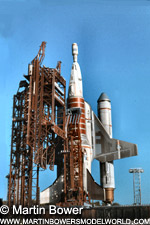
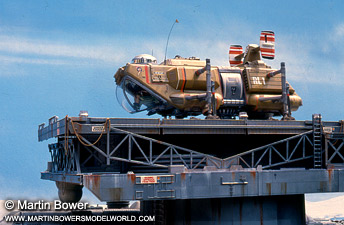
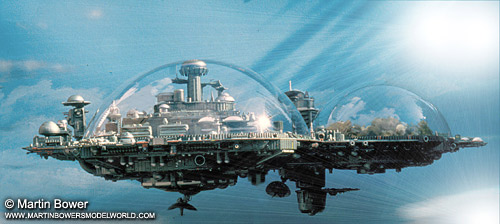

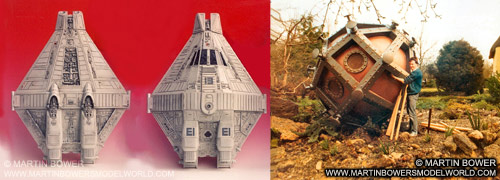
|